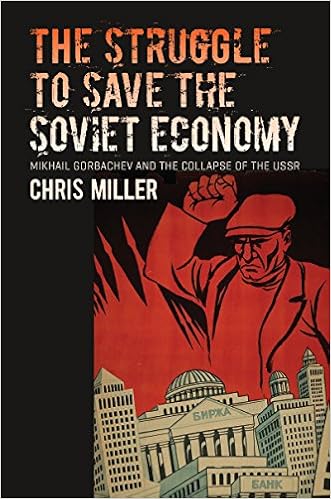I very much enjoyed Chris Miller’s new book The Struggle to Save the Soviet Economy, which explains just how and why the Soviet Union’s economic problems became overwhelming in its last decade of existence. I was too young when the USSR broke up to do much more than just register the news headlines, so the book helped me get a better understanding of the events leading up to its collapse. One of Miller’s themes is that perestroika was not in fact an ill-considered attempt to rapidly introduce Western neoliberal economics, but rather an attempt to emulate the reforms that China was implementing so successfully at the time:
The stagnation and crises of the 1970s and 1980s in Eastern Europe and in the West convinced Soviet leaders that they needed to look elsewhere for models of reform. The rapidly growing economies on the USSR’s eastern border were the obvious place to turn. Most historians have overlooked perestroika’s Asian roots, but they were clear to contemporaries. Leading economist and Gorbachev adviser Stanislav Shatalin, for example, was asked by a journalist which of the world’s economic models the Soviet Union should emulate. Should it copy the West, or learn lessons from its Eastern European socialist allies? The question of international orientation had vexed Russia since Peter the Great, but like many perestroika-era intellectuals, Shatalin believed it was time for something new. “We need to be more attentive to the experiences of Japan, South Korea, and China,” he said. “It is time to unite the Slavophiles and Westernizers, and turn our face to the east.” …
One irony, many Soviet officials noted, was that China’s policies were not actually new. Not only was Deng’s policy of “reform and opening” similar to Lenin’s New Economic Policy, it also mirrored changes to economic governance mechanisms that some Eastern European countries like Hungary tested in the 1960s and 1970s. …But the Soviet officials who embraced China as a model did so not because they thought Beijing’s policies were unique, but because they believed that China provided compelling evidence of what such reforms could accomplish.
Miller’s argument is not that Gorbachev’s reforms were too aggressive or poorly designed, but rather that their effectiveness was undermined by heavy opposition from entrenched interests in the bureaucracy. With the budget in crisis and inflation spiraling, the incomplete reforms could not stabilize the economy and so it collapsed. (This view is similar to the argument made by Jeffrey Sachs and Wing Thye Woo in their classic 1994 article “Structural Factors in the Economic Reforms of China, Eastern Europe, and the Former Soviet Union”). For me, the book had just the right balance of analytical coherence, narrative drive and use of original sources; a great read and now a late addition to my best books of 2016 list.
Another virtue of Miller’s book is how it gives a sense of the socialist countries compared ideas and borrowed from each other, forming a common and distinctive intellectual universe. For more on this kind of cross-pollination, see a previous post on the influence of the New Economic Policy of the 1920s on Chinese economic reforms of the 1980s, and my short account of how China first looked to Eastern Europe for reform ideas before turning to Japan and Korea.

